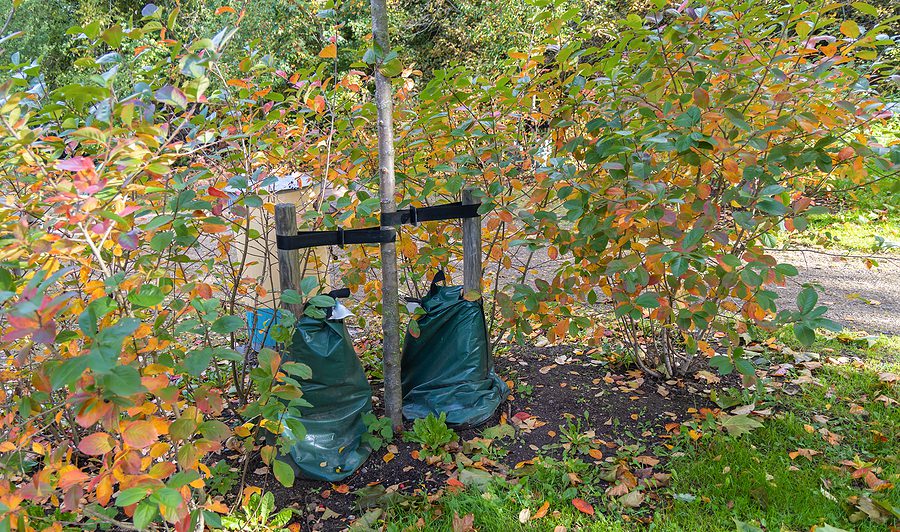Tree Watering Bags – Are They the Answer to Your Tree’s Need for Water?

Tree watering bags come with the guarantee that they will gradually deliver water straight to the roots of the tree, so saving you both time and money and preventing your trees from drying out. If you are not aware of this method of soothing a tree’s thirst, watering bags are pouches that come in green, brown, or black and are designed to either wrap around the lower trunk half of a tree or rest on top of tree beds in the shape of a doughnut. They are intended to be a root-watering system that is both simple and effective. The question is, are these bags effective in any way? Continue reading for an in-depth look at tree-watering bags and other typical techniques.
How effective are tree watering rings and tree watering bags?
The solution to this problem is not plain and dry. Tree watering bags offer a variety of advantages, but in some circumstances, they also have some disadvantages.
The benefits and drawbacks of using tree watering bags
When it comes to hydrating your trees, the deep watering strategy is, by far, the most successful method. Where you reside and the kind of trees you have both play a role in determining whether watering bags are the most effective approach to providing thorough watering.
The usage of tree watering bags can be an effective means of caring for trees. Therefore:
- They are straightforward to put into use. You only need to ensure the bag is full around twice each week, and then you can sit back and let it do its job.
- When you water your trees with a sprinkler or hose, some of the water may run off, but this only happens when you use bags or rings.
- They assist in preventing both overwatering and underwatering, two forms of watering that can be harmful to trees.
- Small, newly planted trees might benefit from water bags to better develop their root systems and obtain a head start.
- During the hotter seasons, they make sure that heat-sensitive trees receive an adequate amount of water.
On the other hand, not all trees enjoy these advantages. The tree watering bags, and rings do have certain drawbacks, such as the fact that they are not intended to be utilized for an extended period. The usage of bags should be limited to two to three months at a time, and they should be removed before winter. There are occasions when tree bags cannot carry sufficient water or are not large enough for giant, mature trees. They are far more suitable for being used on saplings and young trees.
In northern climes, watering bags are often a good investment for tree owners, but in southern climates, issues such as girdling roots and root rot might arise because of the use of water bags. Therefore, a different approach to deep watering is recommended for regions in the south (see below for more ideas on this topic!).
Tutorial on how to construct your watering bag for trees
If you are in the market for a tree watering bag, you may choose from various alternatives available at your neighborhood garden center. If, on the other hand, you would instead try your hand at creating one on your own, you may make a handmade tree watering system by following these instructions.
Various other kinds of irrigation systems for trees
There are several excellent alternatives to using watering bags to provide a gradual and consistent flow of water to the roots of trees. Plant beds are covered with a soaker hose, allowing water to seep into the roots of the plants slowly. When you need to irrigate trees during a drought, it is convenient to have this.
A simple method for watering the roots of a tree that can be built at home is to drill a hole into a five-gallon bucket, then place the bucket under the tree after it has been filled with water and propped up. A bubbler is a device that may be attached to a sprinkler system to provide a stream of water at low pressure to the tree’s roots. Tree watering systems accomplish a great deal, but they need to be more capable of doing everything. You oversee ensuring that the appropriate amount of water is provided to your trees.
